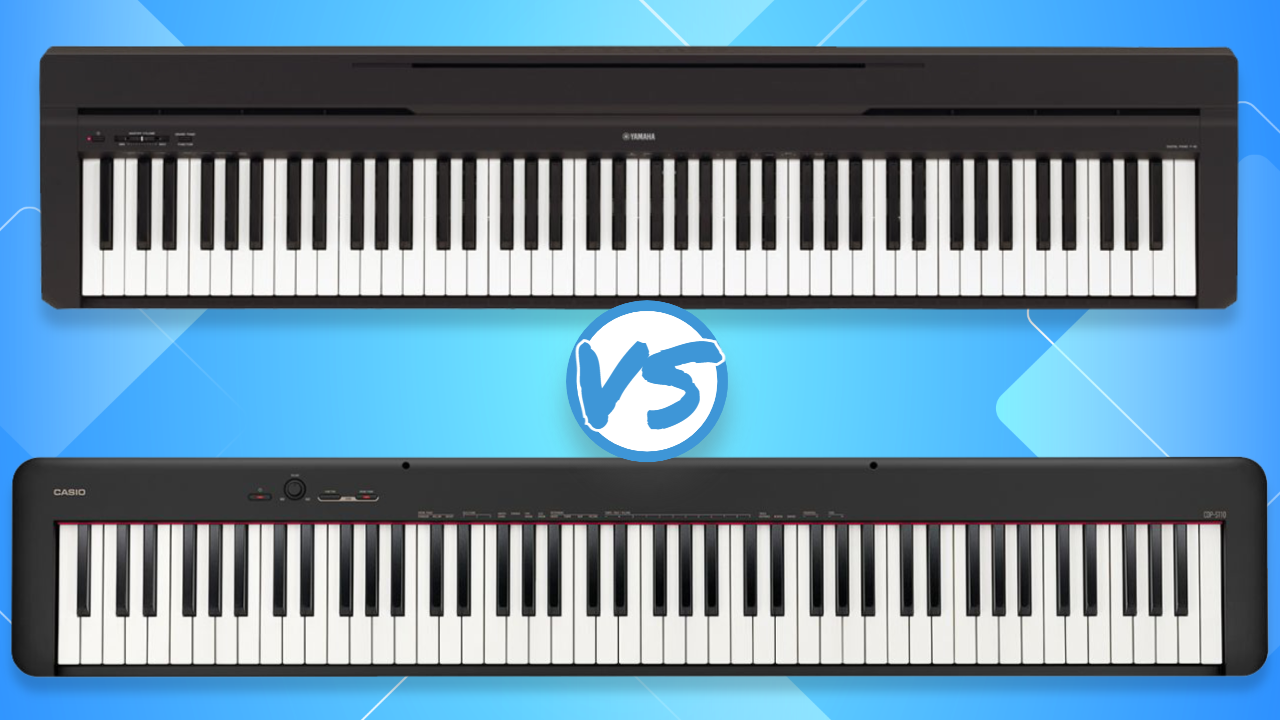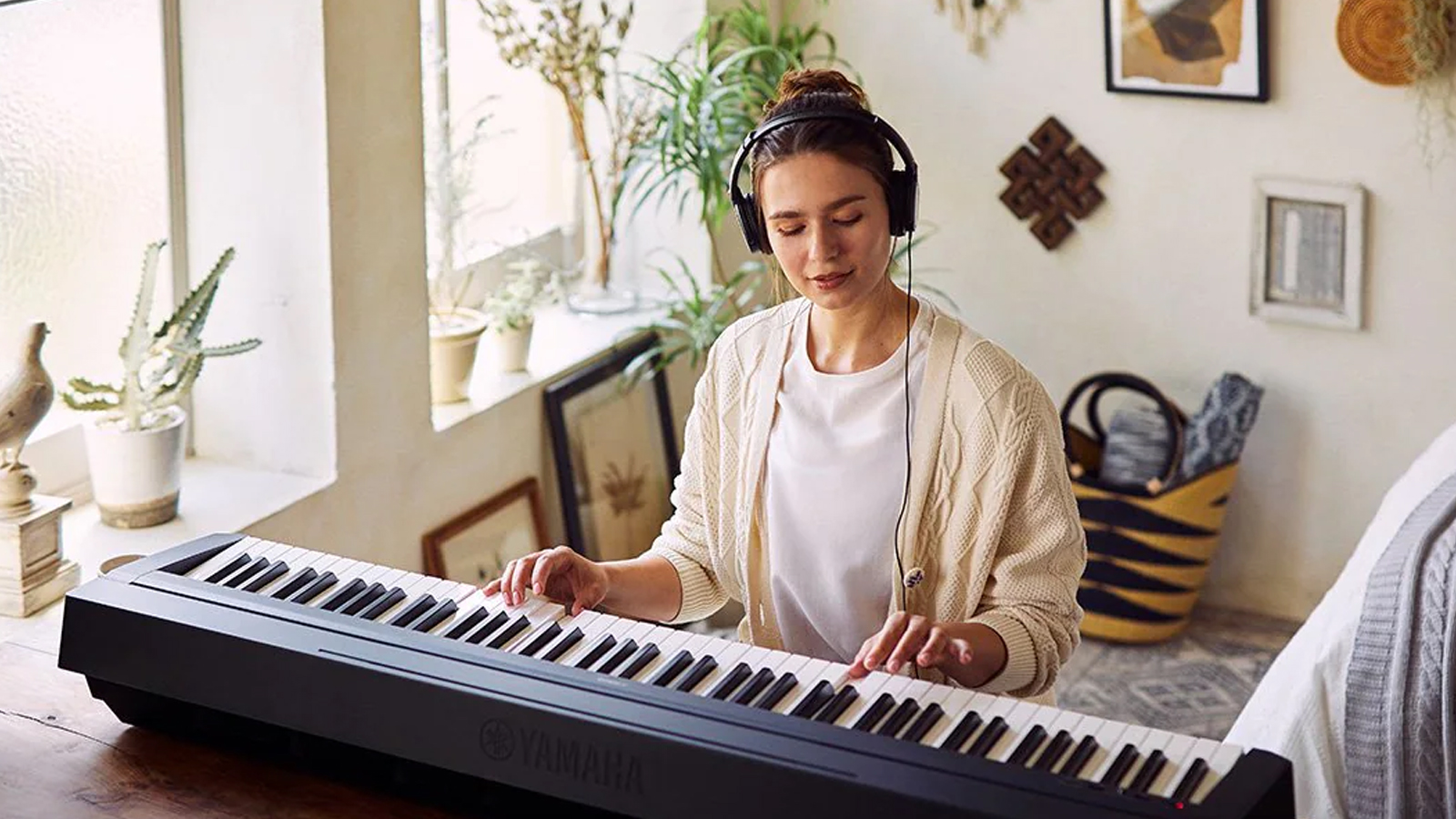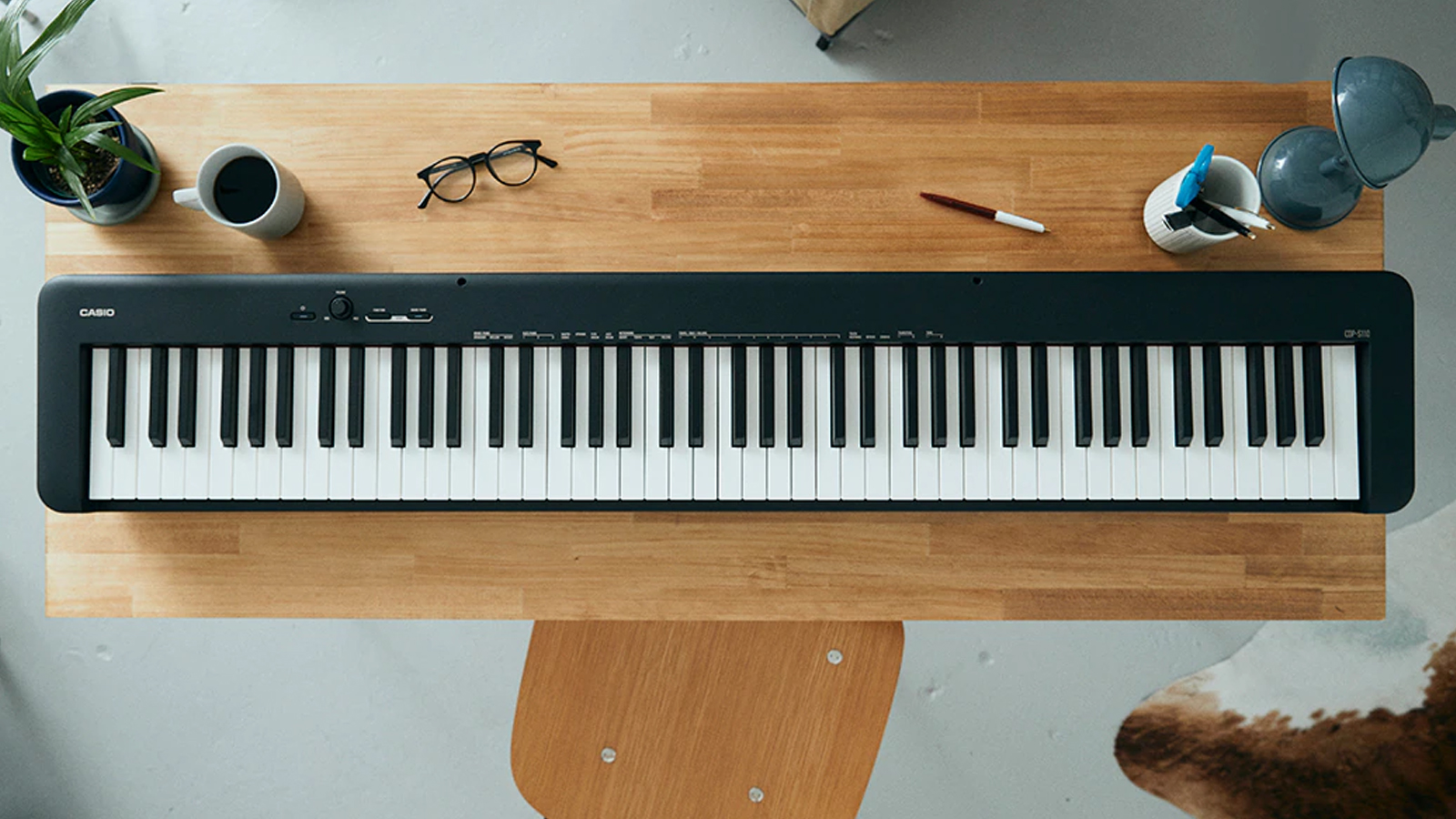Yamaha P-45 Vs Casio CDP-S110: Which is better for beginners?
Two of the most popular beginner-friendly pianos go head to head to see who comes out on top

It's safe to say if you are on the hunt for the best digital piano for beginners, you aren't short of choice. It seems a new budget-friendly piano gets released every other month. Now, while it's nice to have options, it can make it very difficult to navigate this extremely crowded market. Well, allow us to make your decision a little easier. Arguably the two most popular stage pianos are the Yamaha P-45 and the newly released Casio CDP-S110. Therefore we've put these titans of the piano world head to head to see which comes out on top.
On paper, it would appear these two pianos are pretty evenly matched – sharing a price point, feature set and even general look – but there are certainly benefits and drawbacks of each piano. So, let's take a deep dive into each of one and see if we can crown a winner.
Yamaha P-45 Vs Casio CDP-S110: At a glance
Yamaha P-45
- Price: £399/$549/€429
- Keys: 88
- Keyboard: Graded Hammer Standard
- Polyphony: (Max.) 64
- Preset Voices: 10
- Effects: Reverb/ Chorus
- Metronome: Yes
- USB TO HOST: Yes
- Power: DC IN 12V
- Headphones/Output: Standard
- Sustain Pedal: Yes
- Amplifiers: 6 W x 2
- Speakers: 12 cm x 2
- W x H x D (mm): 1326 x 295 x 154
- Weight: 11.5kg
Casio CDP-S110
- Price: £389/$TBC/€439
- Keys: 88
- Keyboard: Scaled Hammer Action
- Polyphony: (Max.) 64
- Preset Voices: 10
- Effects: Reverb/Chorus
- Metronome: Yes
- USB TO HOST: Yes
- Power: AD-A12150LW/ Batteries
- Headphones/Output: Standard
- Sustain Pedal: Yes
- Amplifiers: 8W X 2
- Speakers: 12cm × 6cm (oval) X 2
- W x H x D (mm): 1322 x 232 x 99
- Weight: 10.5kg
Yamaha P-45 Vs Casio CDP-S110: Features
When it comes to digital pianos, there are certain features we've come to expect from these hi-tech instruments – and these two pianos are almost identical if you were to compare them purely on specifications.
Both the Yamaha P-45 and Casio CDP-S110 feature 88-notes and weighted keys – making either piano a suitable choice for those looking to learn the instrument. While there are differences in the feel of the keys – we'll cover that later – both instruments provide a perfect starting point for young and older players alike, and you don't have to worry about running out of notes.
Both pianos offer the fairly standard 64 note polyphony and come with ten in-built voices. Now, while the tones in each piano vary ever so slightly, they do cover pretty much the same ground. Grand piano, electric piano and strings are all represented, and both pianos do a great job at recreating each of them.
And the similarities don't end there, with both pianos featuring headphone sockets, audio outputs, USB-to-host and even come with a basic sustain pedal.
Winner: Really, it's impossible to pick a winner purely on feature set, so we'll have to call this one a draw.
Want all the hottest music and gear news, reviews, deals, features and more, direct to your inbox? Sign up here.
Yamaha P-45 Vs Casio CDP-S110: Build quality and design

Okay, so let's now turn our attention to how well these two pianos are built. As you'd expect, both pianos are made of plastic and are reasonably robust. However, the Casio is ever so slightly lighter – coming in at only 10.5kg – and that is primarily due to the fact that it's quite a bit thinner than the somewhat chunky P-45. As a result, while neither feels flimsy, the P-45 definitely feels more rugged.
In terms of looks and design, it's fair to say that the Casio is sleeker. The minimalist control layout and more compact frame mean it instantly looks more modern when compared to the P-45. The Casio would quite happily sit on a desk with no problems at all, while the chunky nature of the P-45 means the Yamaha feels more at home on a keyboard stand.
Winner: Overall, the keybed on both products feels durable and well put together. Both pianos are well designed and thought out, but we have to give the points to Casio for its elegant design and compact nature.
Yamaha P-45 Vs Casio CDP-S110: Playability
Arguably one of the most critical elements of any instrument is how it feels to play, and this is where the P-45 and S-110 diverge the most. Now, don't get us wrong, both of these pianos feel great, but they do feel very different. The Casio, while responsive, has a fairly light action, perfect for those looking for a piano with a delicate touch. This soft touch is ideal for beginners and young players, as they don't need to press the key as hard to get a note to sound.
On the other hand, the Yamaha has a firmer action, more akin to an acoustic piano. Now, obviously, it's not going to feel exactly like a traditional piano, but it's certainly closer than the Casio. So, with that in mind, it is safe to say that the P-45 will suit the player seeking the familiar feel of a piano. In addition, the P-45 takes advantage of Yamaha's GHS key action, which attempts to recreate the graded feel of a real piano. In the most basic sense, this technology is used to vary the weight of the keys as you move from the heavier bass notes to the lighter treble notes. So, with that in mind, we'd say the Yamaha has the more authentic feel out of the two.
Winner: For us, this round goes to the Yamaha P-45. The slightly heavier nature of the keys results in a much more satisfying playing experience. There is also more 'growing room' in the Yamaha. As a beginner player progresses, they may find themselves longing for the heavier touch of a real piano, so it just makes sense for us to start with the Yamaha, to begin with.
Yamaha P-45 Vs Casio CDP-S110: Sounds

Okay, so as we alluded to above, the type of sounds found in both of these pianos is very similar, but which unit sounds the best? Well, let's focus purely on the grand piano settings – which, let's be honest, is the sound you'll use 99.9% of the time.
Both the CDP S-110 and P-45 have fairly convincing grand piano voices. Each piano does a great job of capturing the nuances of these harmonically rich instruments. From deep bellowing lows and sparkling highs, the entire frequency range is represented. That said, both pianos have somewhat small speakers, therefore, they sound much better when used with a good quality set of headphones - it's worth checking out our guide to the best headphones for digital piano if you don't have a set.
Winner: If we were to crown a winner, then we'd have to give it to Yamaha, as the Casio can sound a little 'hi-fi' at times. To our ears, the Yamaha sounds more natural and, in some settings, sounds fuller and richer. We feel if you are practicing for extended periods of time, the P-45 would be less fatiguing on your ears.
Yamaha P-45 Vs Casio CDP-S110: Final verdict
It's really incredible just how closely matched these two pianos are. From features to price, on paper, they are almost identical. In reality, though, they feel very different to play, and that should be a significant consideration if you're looking to purchase a new piano.
While neither of these instruments feels terrible to play, which is right for you comes down to personal preference. For those looking for a softer response, then the Casio is certainly the piano to go for. That said, for those seeking the more familiar touch of a 'real' piano, then the Yamaha would be our go-to.

I'm a Senior Deals Writer at MusicRadar, and I'm responsible for writing and maintaining buyer's guides on the site. As part of my role, I also scour the internet for the best deals I can find on gear and get hands-on with the products for reviews. My gear reviews have been published in prominent publications, including Total Guitar, Guitarist, and Future Music, as well as Guitar World.com. I've also had the privilege of interviewing everyone from Slash to Yungblud, as well as members of Sum 41, Foo Fighters, The Offspring, and many more.
In a previous life, I worked in music retail, selling everything from digital pianos to electric guitars. I'm also a fully qualified sound engineer who holds a first-class Bachelor's degree in Creative Sound Production from the University of Abertay.